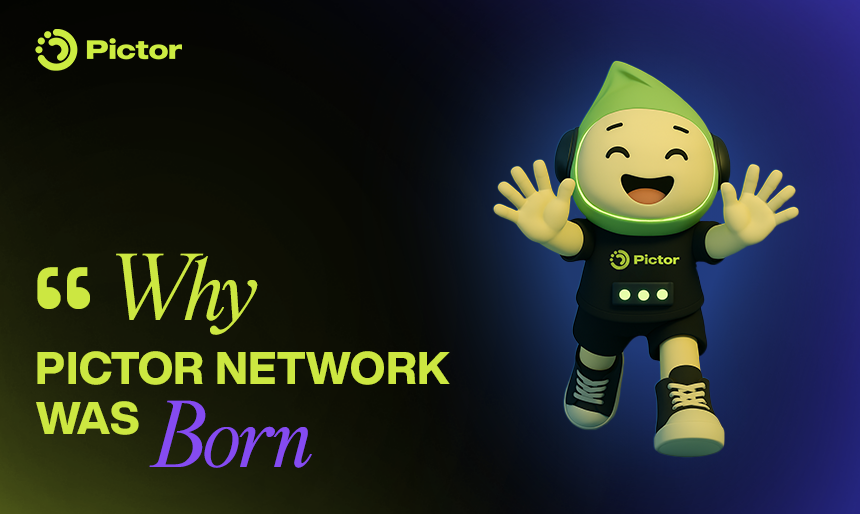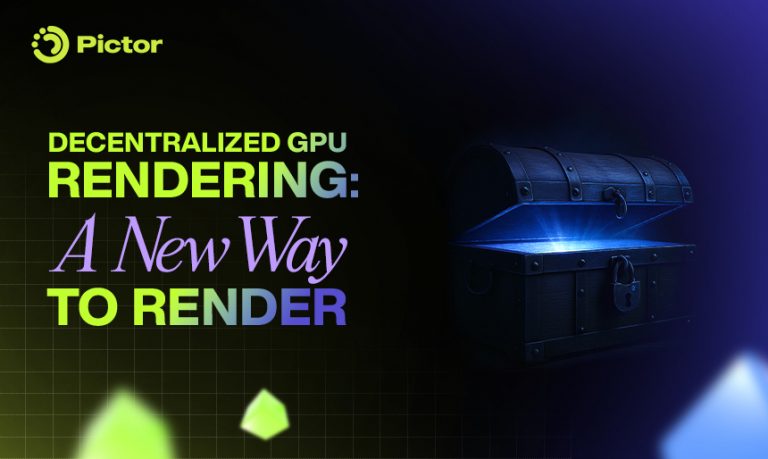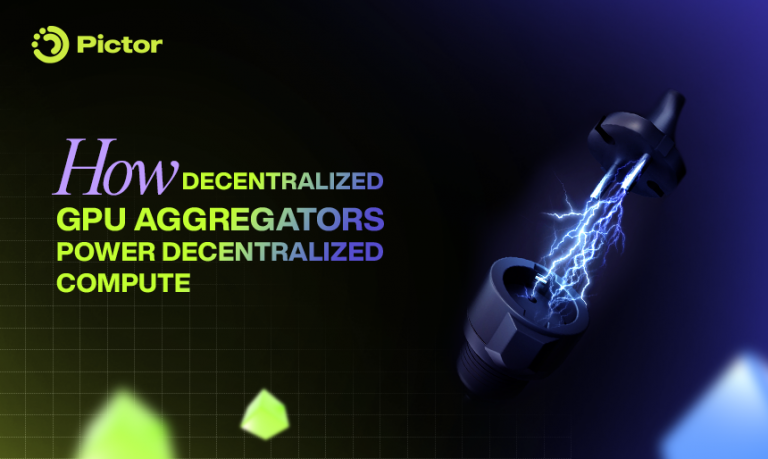“The world is being rendered in real-time — but the infrastructure can’t keep up.“
The Age of Visual Computation
From hyperrealistic 3D movies and gaming universes to AI-generated photorealistic content and architectural design, the world is entering an era of visual computation. At the core of this transformation is rendering — the silent force turning imagination into pixels. But while demand soars, the underlying infrastructure is choking.
Pictor Network was born to change that.
1. Why the World Needs More Rendering Power
We’re entering a golden era of digital creation. From cinematic universes and immersive games to AI-generated content and virtual showrooms, the demand for rendering has never been higher.
At the center of this creative explosion are five rapidly growing sectors:
- 3D Graphics
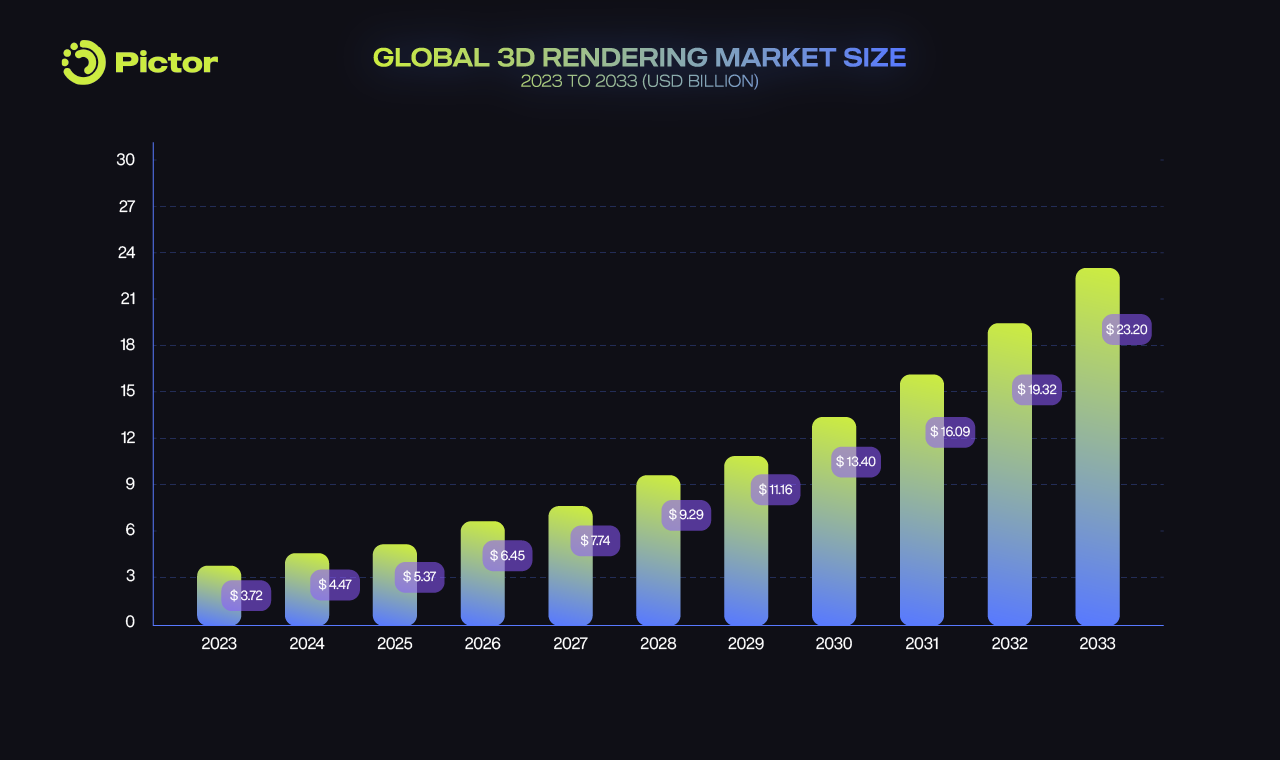
- The Metaverse
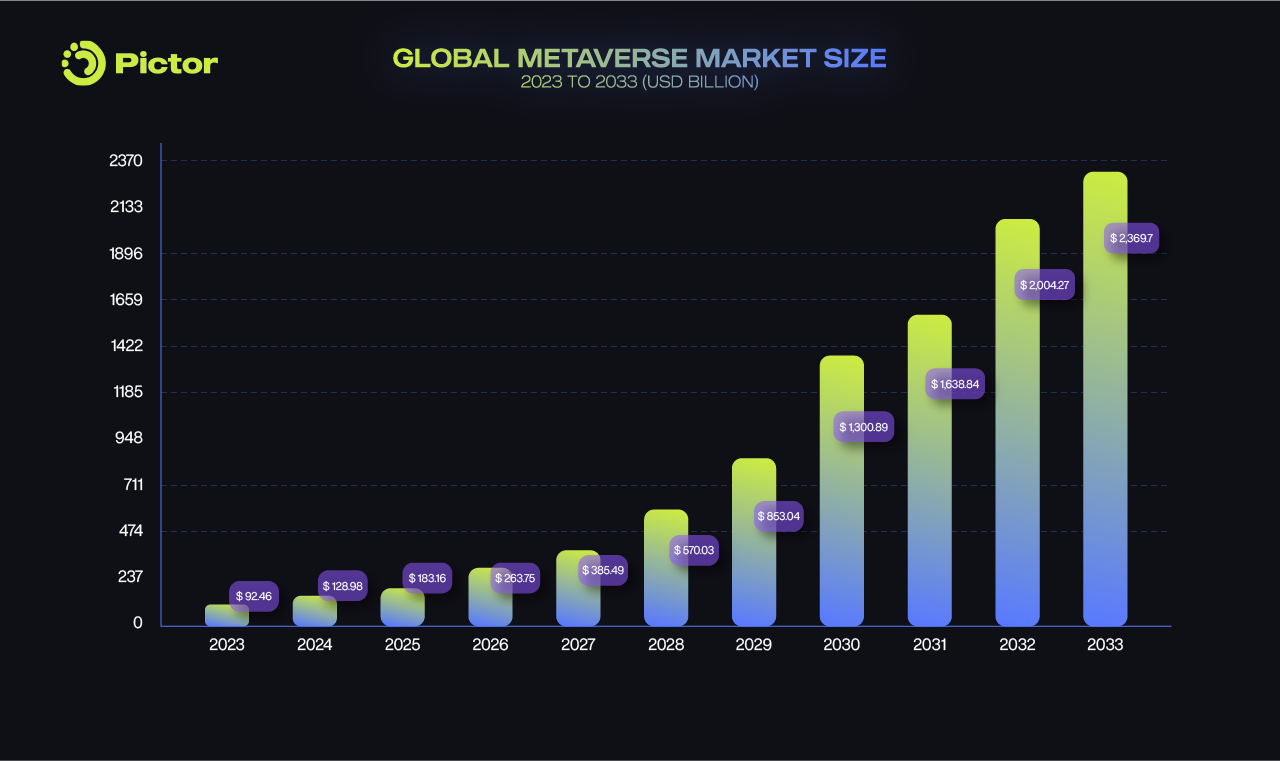
- Generative AI
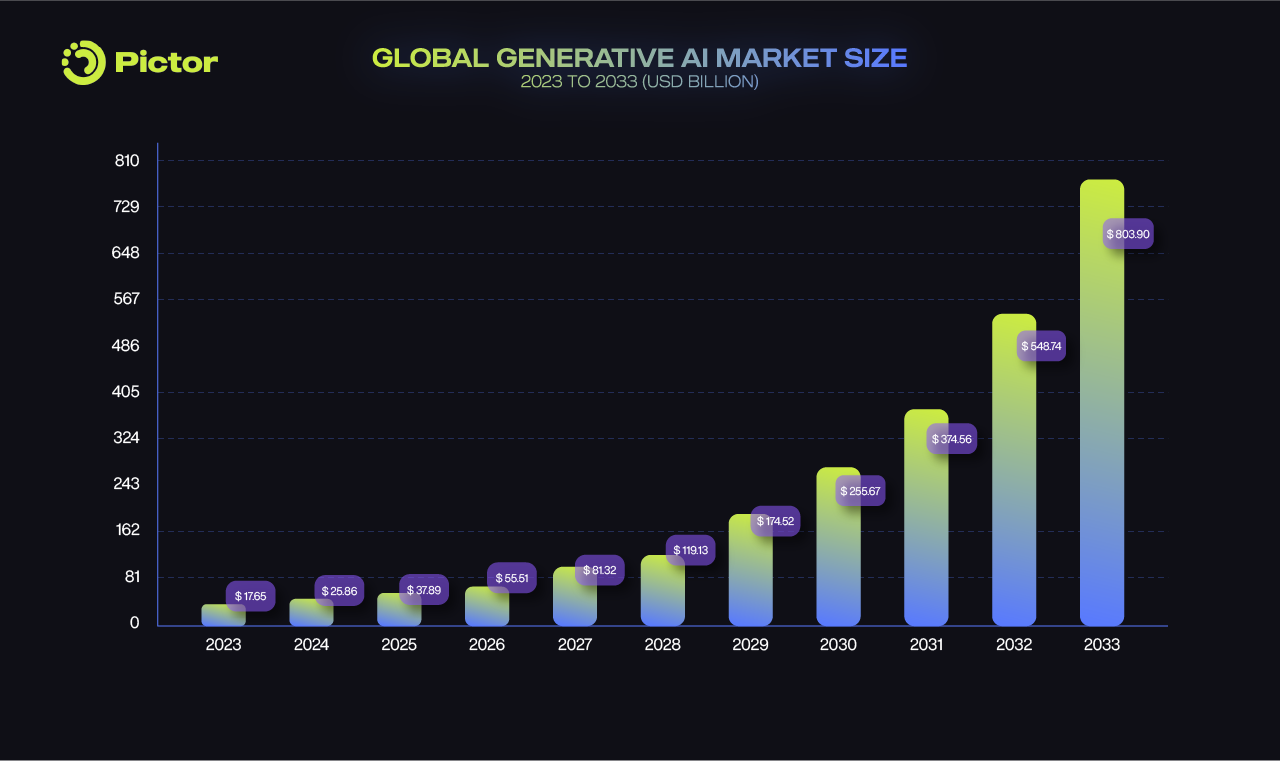
- Gaming (including GameFi)
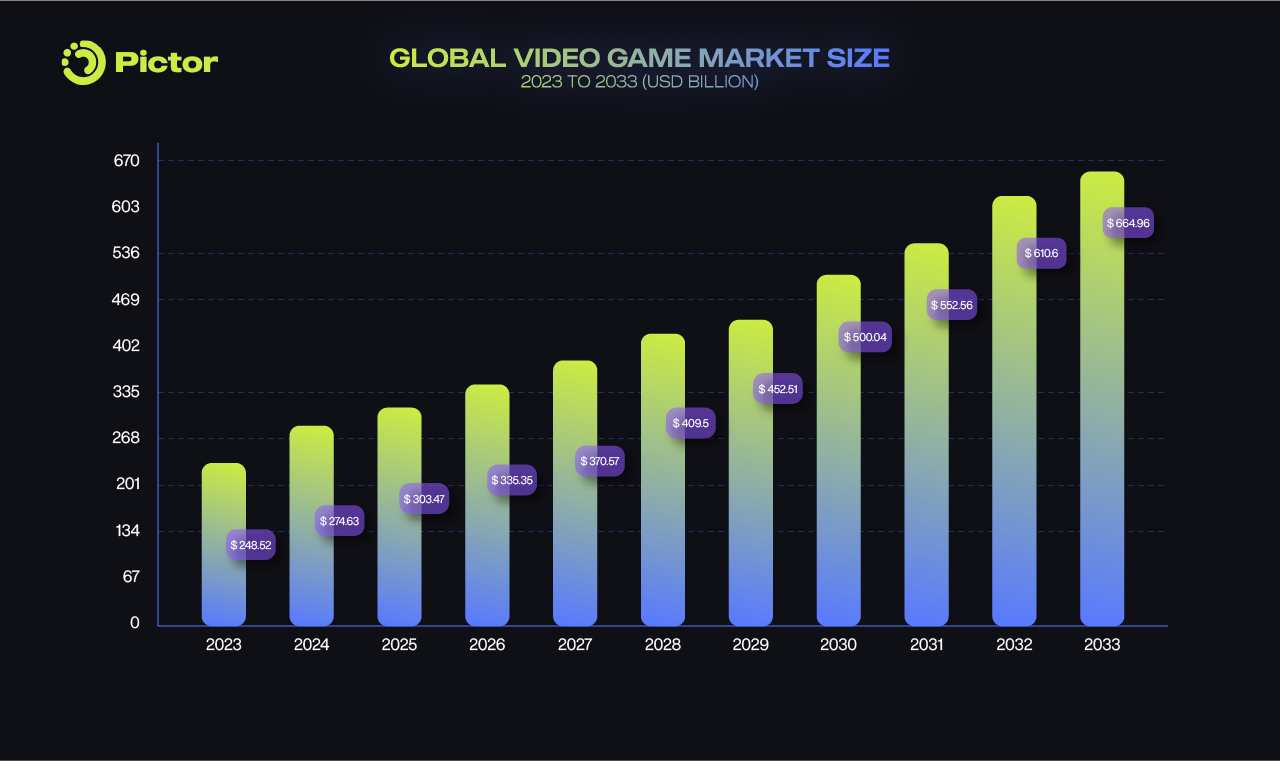
- NFTs
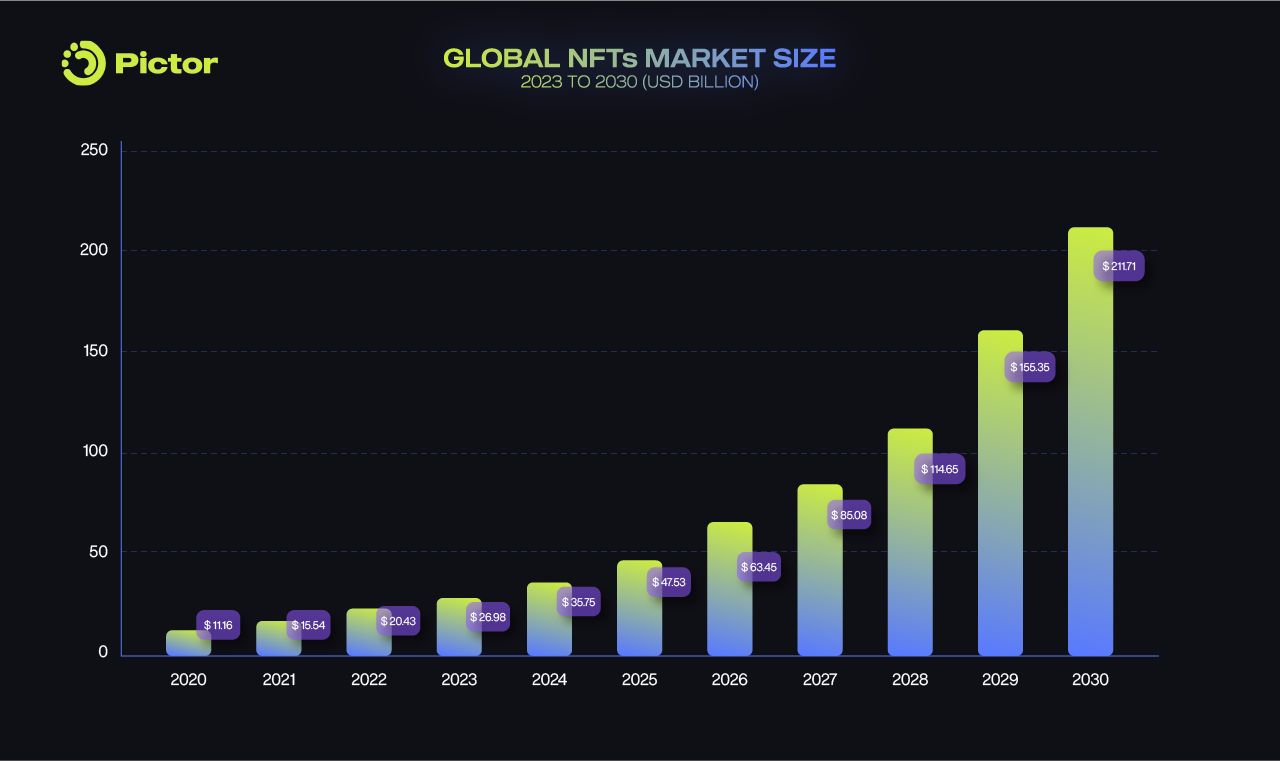
Together, these industries were worth nearly $390 billion in 2023 and are projected to exceed $4.3 trillion by 2033 — growing at an average rate of almost 30% per year.
But this isn’t just about big numbers. It’s about a global wave of creators — artists, developers, designers, researchers — all producing increasingly complex visual content faster than ever before. At the heart of it all is one thing: rendering.
Whether powering real-time 3D environments, training AI models, or visualizing digital assets, rendering has become an essential layer of the creative stack.
As this demand continues to grow, a critical question arises:
Can today’s rendering infrastructure keep up?
2. The Problem: GPUs are the New Oil, But They are Out of Reach for Most Creators
The demand for 3D content is soaring, but the infrastructure behind it is falling short.
Today’s creators depend on GPU-intensive processes for 3D rendering, cloud streaming, and AI training. Yet, centralized GPU clouds are struggling to scale. The result? High costs, limited access, and long wait times, especially for small teams, freelancers, and indie studios.
As we move into a future shaped by the Metaverse, real-time interaction, and immersive experiences (AR/VR/XR), the requirements for compute are only growing. Rendering today’s FHD content is one thing, but rendering photorealistic, interactive 3D scenes at scale? That demands far more GPU power than most can afford.
2.1 A World of Idle GPUs — Going to Waste
Ironically, while many creators can’t get the power they need, the world is full of idle GPUs.
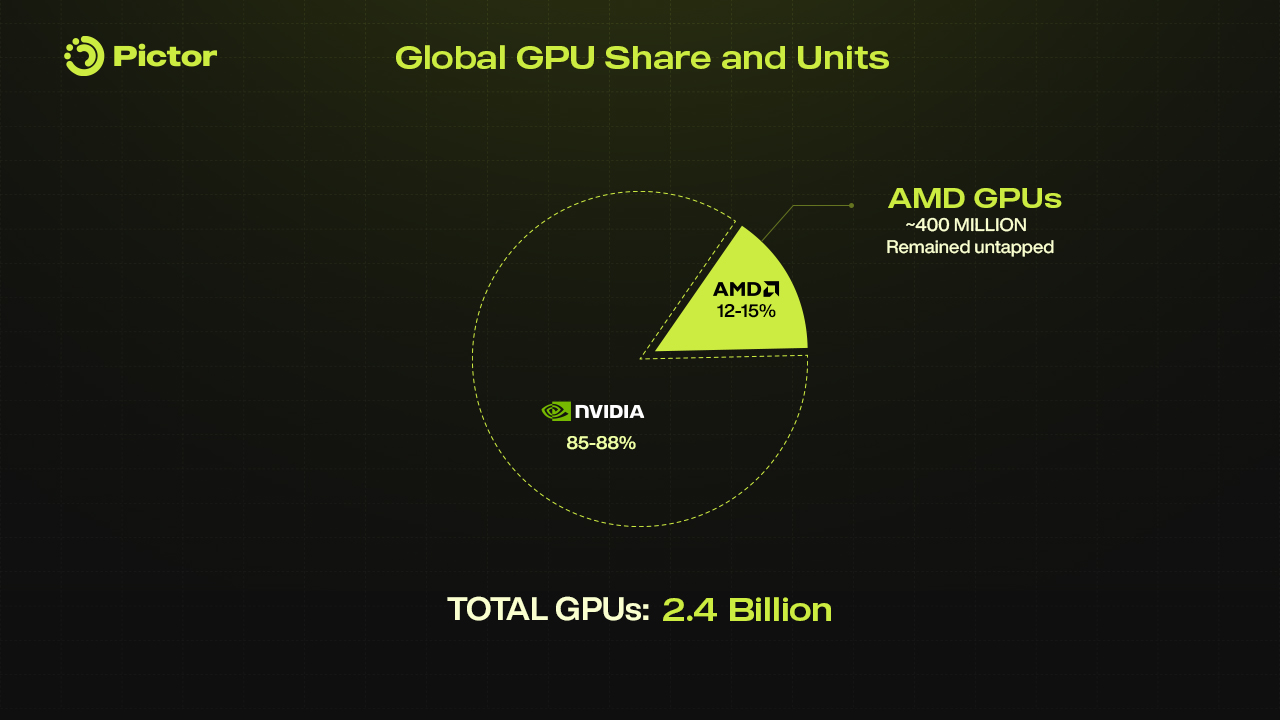
There are an estimated 2.4 billion GPUs globally (according to Jon Peddie Research). Even if just a fraction of them were available, the rendering bottleneck could be solved. However, today’s cloud services and render farms tap into only a small, centralized portion of that supply.
- NVIDIA GPUs dominate the rendering ecosystem, yet many remain underutilized.
- AMD GPUs, despite being cost-effective and increasingly powerful, are still largely ignored by most render farms and decentralized networks.
This leaves a massive amount of compute potential locked and unused.
2.2 Fragmented Farms, Isolated Islands
To make matters worse, the rendering ecosystem itself is fragmented.
Render farms operate in isolation, with their own pricing, hardware setups, and software requirements. Some have excess capacity during off-peak hours. Others suffer from GPU shortages during peak times. But there’s no coordination between them.
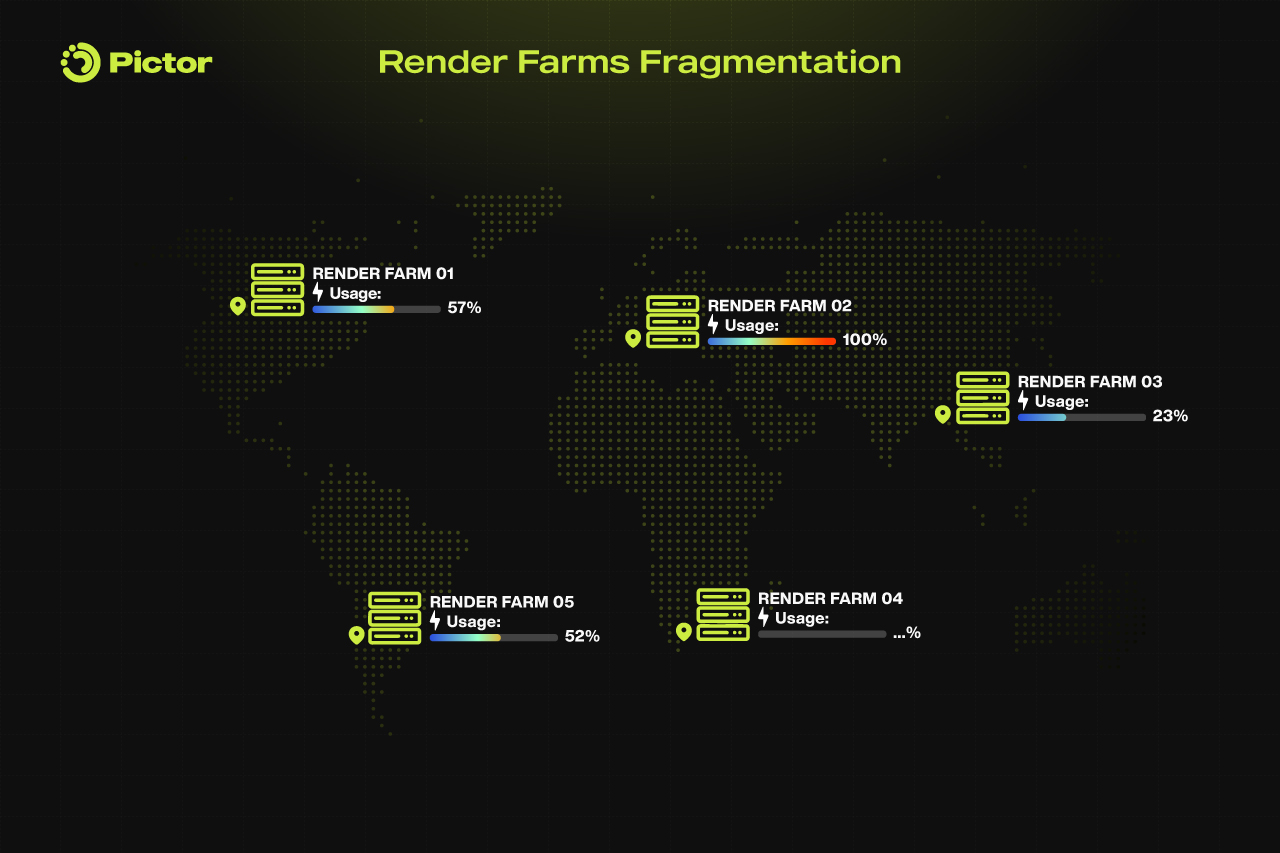
For creators, this means wasting time hopping between platforms, looking for compatible, affordable rendering options. For farms, it means underutilized resources when demand drops and overcapacity when demand spikes.
The result? A broken loop: creators wait, farms idle, GPUs go unused.
2.3 A Global Mismatch
This disconnect between soaring demand, wasted supply, and fragmented infrastructure is the core problem holding back the next wave of 3D content creation.
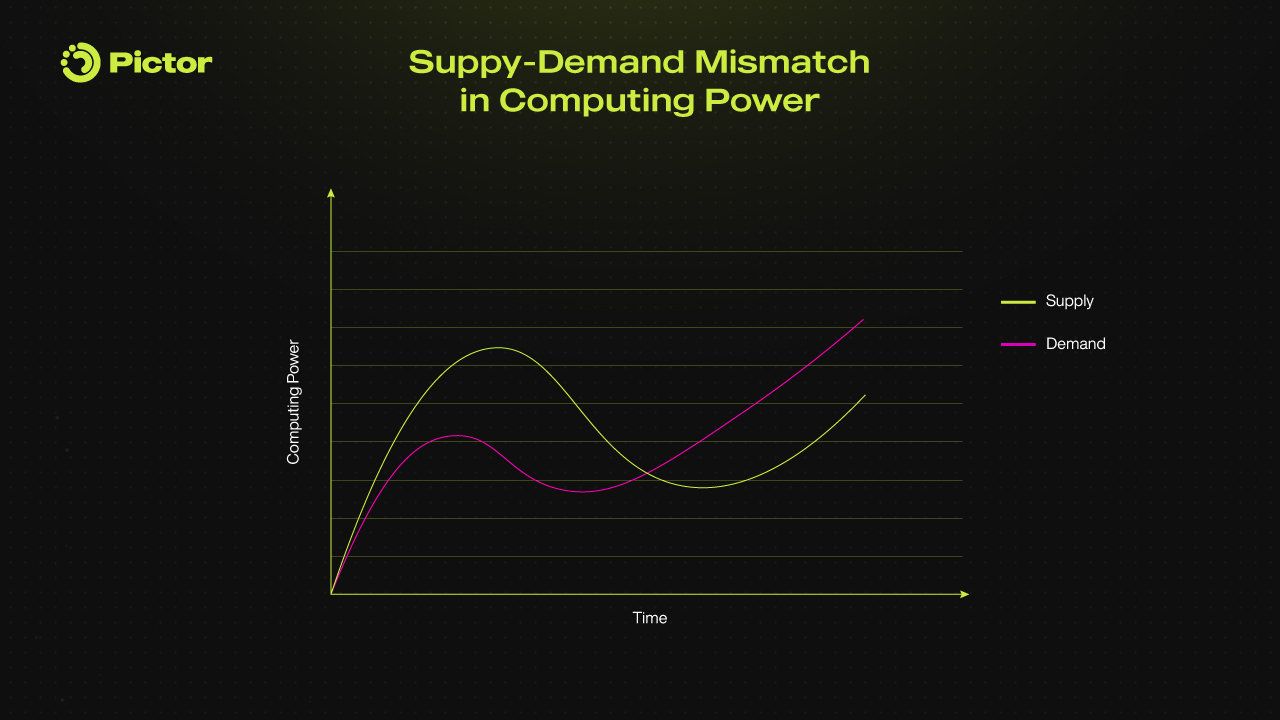
Millions of creators are blocked by cost, delay, and complexity. Meanwhile, billions of dollars in GPU hardware sit idle or unsupported.
Solving this isn’t just a technical upgrade, it’s a structural shift.
3. The Solution: Pictor Network — Reimagines GPU Infrastructure
Pictor Network is not just a fix — it’s a full rethink of how the world accesses rendering power.
At its core, Pictor Network is a decentralized GPU network that connects two sides of the equation:
- GPU Requesters: 3D artists, AI developers, and studios who need high-performance compute power.
- GPU Providers: Anyone with idle hardware, from individuals to render farms, ready to supply it.
By linking them directly in a global marketplace, Pictor Network transforms idle GPUs into productive assets while giving creators affordable, on-demand access to the power they need.
3.1 Full AMD GPU Integration — A World First
For the first time ever, Pictor Network brings full support for AMD GPUs to decentralized 3D rendering.
While traditional render farms and GPU clouds overwhelmingly favor NVIDIA, millions of AMD GPUs remain sidelined. Pictor Network unlocks this untapped resource, enabling AMD owners to monetize their hardware and giving creators access to more GPUs at a lower cost.
This inclusive approach expands the global supply of rendering power like never before.
3.2 A Unified Rendering Layer for the World
Rendering is currently fragmented. Each render farm runs its own platform, pricing, and configs, forcing creators to jump through hoops and causing massive inefficiencies.
Pictor Network fixes this with the Pictor Aggregator:
A single interface that integrates render farms around the world, allowing creators to:
- Compare rendering options
- Filter by cost, availability, and software support
- Get their jobs routed to the most optimal resources
This means better scalability, fewer bottlenecks, and a far smoother workflow — both for creators and providers.
3.3 Fair, Real-Time Pricing with Blockchain-Backed Markets
Instead of centralized pricing, Pictor Network uses blockchain to enable an open marketplace.
GPU Providers set their own prices. Job requests are matched and executed based on real-time supply and demand. No gatekeepers. No fixed tiers.
This model creates a competitive, transparent ecosystem — one that benefits both sides of the market and keeps prices aligned with real-world usage.
3.4 Built for Sustainability
There’s no need to keep producing new hardware when billions of dollars in GPUs already exist — unused and aging out.
By repurposing idle and underutilized GPUs across the globe, Pictor Network:
- Reduces e-waste
- Extends hardware life cycles
- Cuts the carbon footprint of 3D rendering at scale
We’re not just decentralizing compute, we’re making it cleaner, more efficient, and more responsible.
3.4 A New Era of Rendering Begins
Pictor Network bridges the global mismatch between GPU supply and rendering demand.
We unlock forgotten hardware, unify a fractured ecosystem, and give creators the power to build without barriers.
We’re not building just another render farm. We’re building the infrastructure layer for the future of visual computing — decentralized, democratized, and powered by people.
Join the Pictor’s Decentralized Rendering Revolution
The future of 3D rendering is decentralized, accessible, and creator-first. Pictor Network is unlocking global GPU power. And we’re just getting started.
Whether you’re a 3D artist, AI builder, or GPU owner, now’s the time to be part of the movement.
👇 Follow our journey:
- Website: https://pictor.network/
- X: https://x.com/pictor_network
- Telegram: https://t.me/pictor_community and https://t.me/pictor_channel
- Discord: https://discord.com/invite/gpcXrp3tvh
- LinkedIn: https://www.linkedin.com/company/pictor-network
- YouTube: http://www.youtube.com/@Pictor_network
Let’s build the future of Web3 rendering — together.

